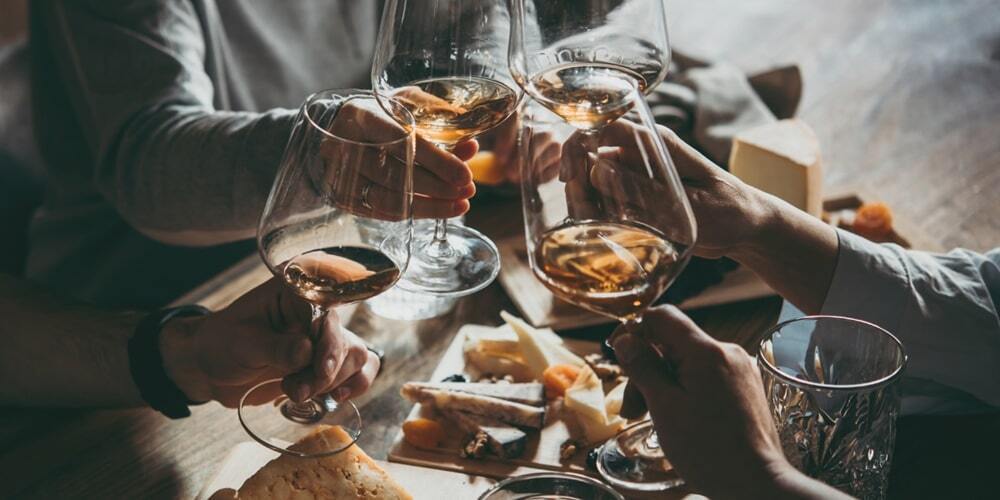Trendy restaurants are celebrated not only for their famous chefs but for how well their chefs and sommeliers work together. It's no longer enough to have great food OR great wine; it's understanding how that perfect pairing brings out the best in both.
To many, pairing food with wine is thought of as an art, but there is a little bit of science behind all those classic pairings. This science is responsible for that blissful, ooh and ahh moment that only a perfect food and wine pairing can deliver.
Lucky for us mere mortals, it is somewhat subjective, but still, there are some basic principles we can all follow.
First of all, let's review the seven common flavours in food. These are astringent, bitter, pungent, salty, sour, sweet, and umami, and these are detected by the tongue through taste buds distributed throughout its surface.
These flavours form the basis of all wine pairings. In fact, without recognising the predominant flavour or flavours in food, it's almost impossible to find a good match from your cellar.
Wine 101 training taught you that all wines have the following characteristics: acidity, tannin, sweetness, and alcohol level.

Acidity is found in all wines and leaves a fresh, tart taste in your mouth. The level of tartness depends on the level of acidity. When wine connoisseurs refer to a wine being fresh or crisp, they are referring to the acidity of the wine.
Tannins are naturally occurring elements found in wine and come from the skins, seeds, and stems of grapes and the wood when aged in the barrel. Although tannins can't be smelled or tasted, they're what give you that puckering and drying sensation in your mouth, like you just sucked on a teabag. Tannins are usually found in red wines and pair well with fatty foods - which is why red wine and red meats are a classic pairing – and why reds are rarely paired with fish since tannins will make even the freshest of fish taste fishy.
Sweetness is used to describe the amount of residual sugar perceived on the palate after fermentation. If a wine is dry, the sugars present in the grape were fully fermented into alcohol. Using this explanation, wines described as off-dry, sweet, or dessert wines should be self-explanatory.
Alcohol helps to dictate a wine's weight and body. Usually, the higher the alcohol level, the more weight a wine has, and this will increase the perception of density and texture on the palate. Spicy or salty foods will accentuate the alcohol resulting in a feeling of heat on the palate.
Below are 12 tips and tricks that tie all the above scientific data together and works to pair your venue's food with its wine list:
-
Before you start thinking of pairings, ensure you ask your guests' preference in wine. Even the best food and wine pairing will be lost on a customer that doesn't care for red wine.
-
The wine should have a higher acid content than the food. Grab a Sangiovese or a Chianti to pair with tomato-based pasta dishes.
-
The wine should have a higher sugar content than the food; Sauternes and cheesecakes (sans chocolate) pair beautifully.
-
The wine and the food should be equally intense, meaning full-bodied wines pair better with heavy foods, and light-bodied wines pair better with lighter foods. For this reason, a Beaujolais, although it's a red wine, will never stand up to a thick, juicy steak like a chewy Syrah or peppery Zinfandel would. Think medium-bodied Pinot Noir with salmon and a light-bodied Chenin Blanc with your delicate seafood dishes.
-
Red meat pairs best with red wines but pay heed to point #2 above.
-
Salty dishes pair best with acidic wines, have some sweetness, and are low in tannins. Briny oysters and Champagne... hello!
-
Fish or chicken goes better with white wines, but you can break the rules with some reds.
-
High acidic wines cut through and balance fatty foods.
-
Spicy foods pair best with sweeter wines, so seek out an Alsacian Gewürztraminer with your next curry.
-
If food is served with a sauce, the wine should be paired to the sauce.
-
Either contrast the flavours of the food and wine – sweet and salty pairing, anyone? – or allow the flavours to complement each other, like an earthy pinot noir with a mushroom-heavy dish.
-
There's a saying, 'what grows together, goes together.' Think about wine regions and the dishes they're famous for: Beef Bourguignon and a Burgundian Pinot Noir, Rioja when serving paella or a crisp Sancerre with a block of velvety goat cheese from France.
Use these handy tips to find a combination that works with what is served – both from the kitchen and the cellar – at your venue, then watch as your customers experience your food and wine the way they should.
We’d love to explore how we may be able to support you with your guest experience, so please reach out and someone from our team will be in touch shortly.

Dubai, United Arab Emirates

